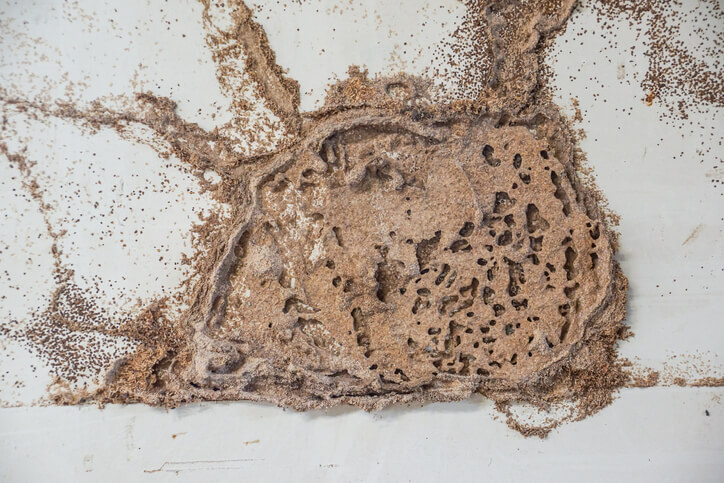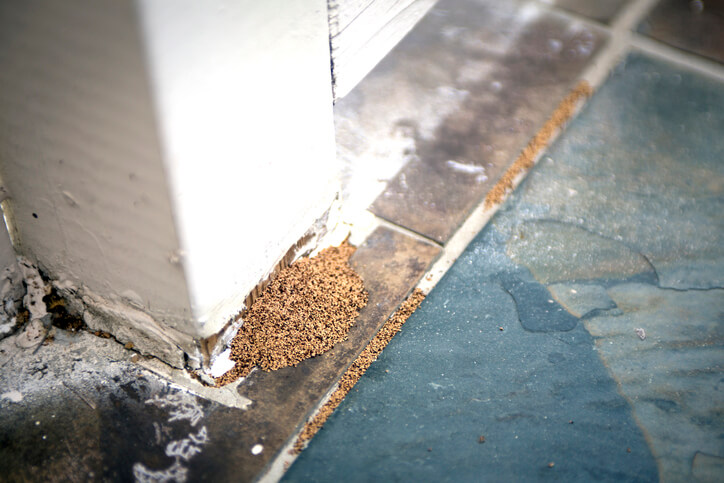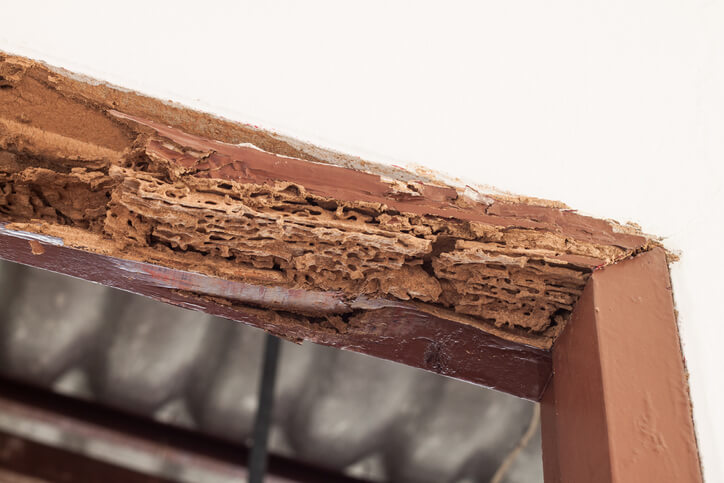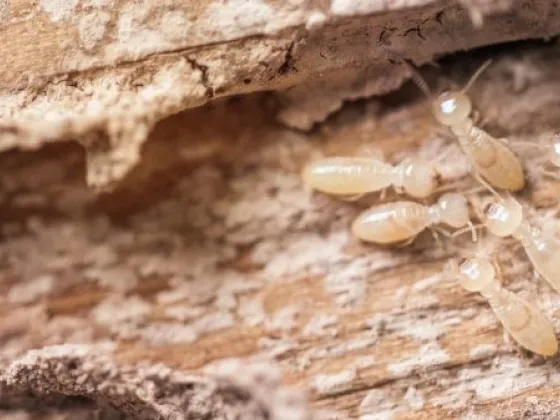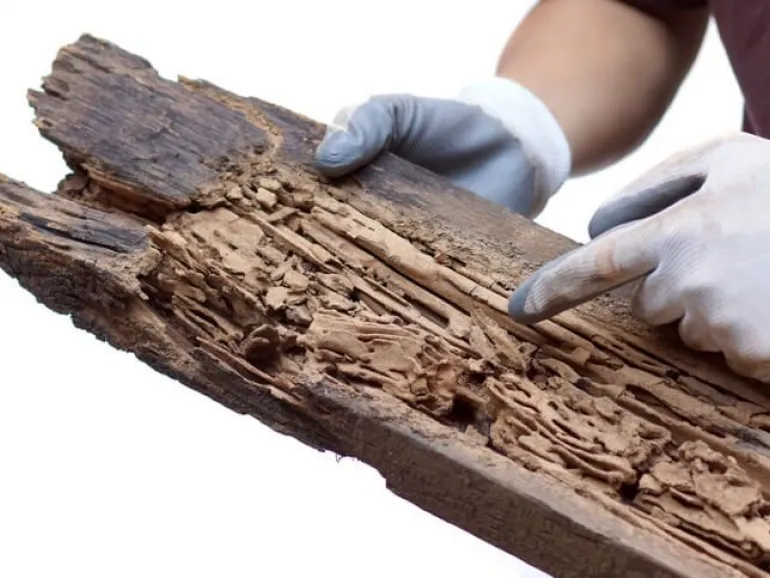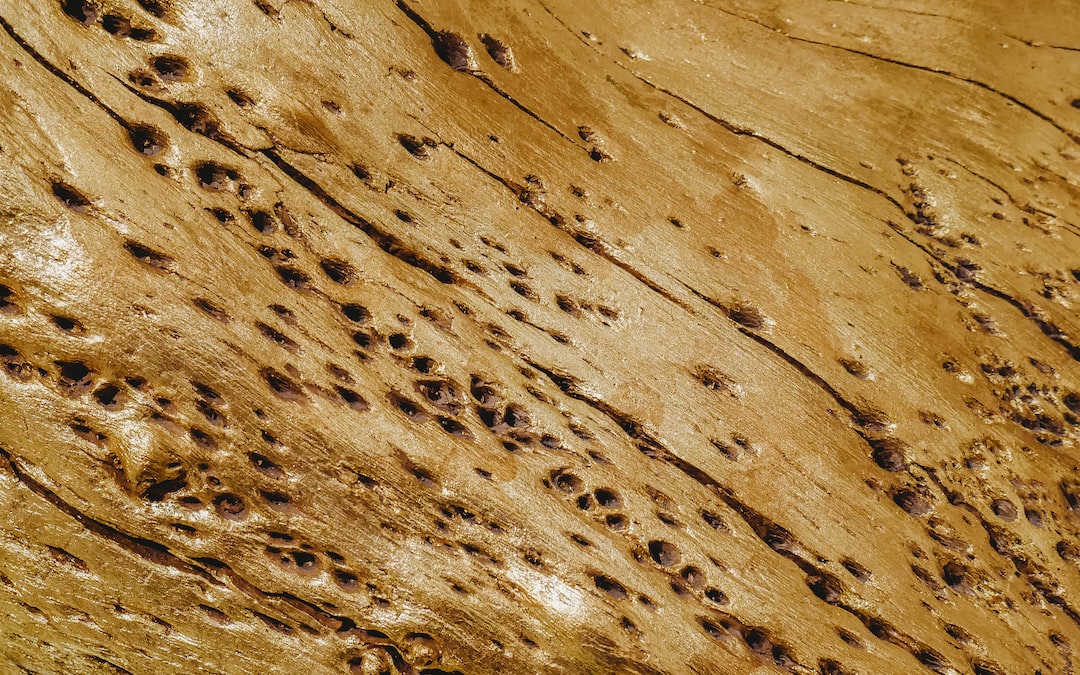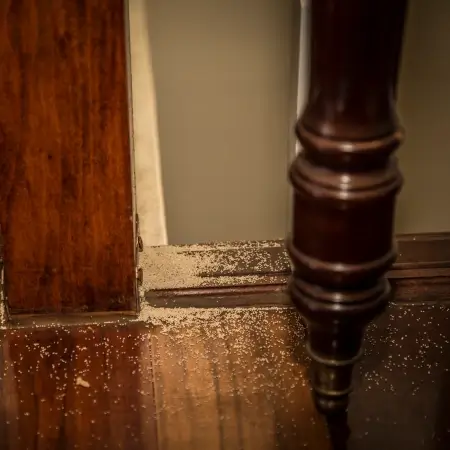5 Ways on How to Spot Termite Damage
Just because they are unseen doesn't mean they are not there. Whether they are subterranean termites or drywood termites, these small insects are nothing but vicious, particularly to your wooden constructions.
Termite infestation can cost a lot of money directly and indirectly. Think about having a much weaker foundation at home and a much lower property value. Worse, a termite colony can cause a lot of damage in a tiny amount of time.
But how do you spot these termites and their damage at home? Here are five of them:
1. One of the Biggest Signs of Termite Damage Is the Presence of Mud Tubes and Tunnels
The most obvious sign of a termite infestation is mud tubes or tunnels on or near your house. Termites use these to travel back and forth from their nests.
Termite mud tubes are an engineer's nightmare. Once they appear, it is only a matter of time before the whole house collapses.
Termites hollow out wood with their mouth parts and excrete wood pulp as a soil-like building material that hardens into tough, brown tubes. These protect subterranean termites from predators and the elements. (Drywood termites nest on the wood they feed on.)
They also serve as passageways for worker termites, which are responsible for bringing food for the termite colony.
The termite tube actually consists of two different materials:
- "Frass" (termite droppings) provides structural strength to the tunnel walls.
- Saliva holds everything together.
As you can imagine, this makes for very unstable ground under your home. These termite mud tubes can lead directly into any wooden structure like floors, beams, or support posts beneath the ground - no matter how deeply buried they may be on the surface!
The termite mud tubes, or shelter tubes in this case, are built in a zigzag pattern and can stretch up to ten times in length. If you discover these tubes near your house, there may already be extensive damage occurring without your knowledge.
The trick is knowing what to look for: if you see tunnels like these, it is wise to suspect termite infestation and start searching immediately for the insects. Follow the tubes to know where they officially begin.
2. Termite Droppings Are Another Sign of Termite Infestation
Termite droppings usually look like little piles of black pepper. Others, though, appear to be blocks of wood or mud that have been cut into cubes. These are often found near door and window frames, other secluded areas that could be used as an entry point into your house.
Termite droppings are often found near their nests and a food source, but they can also be seen in areas where they don't seem to belong. It's possible that these subterranean termites or drywood termites use their own poo for construction purposes.
Termites use mud and chewed-up plant material to build shelters and mud tubes inside trees and other wooden structures. This explains why termite-infested wood sounds hollow.
Most building materials used by these hard working creatures consist mainly of microbes like bacteria or fungi. Digesting them produces sticky brown goo that holds everything together nicely (and makes it smell awful).
Termites then excrete this goo to use as a building material for their subterranean nests or eat their droppings to get the nutrients contained therein.
When you see small pellets on the entryways, then, most likely, you have a termite infestation. If you're doing a periodic inspection at night or in dark spaces, keep a flashlight on hand.
3. Termite Infestations Can Lead to Damaged Wood
Although wood is one of the strongest materials in the world (think about hardwood floors that last for at least 50 years), it is not immune to wear and tear, like wood rot. Soft wood can get ruined when moisture is high. But nothing compares to the effects of termite damage.
One can notice termites on wood by looking for small "sawdust" produced by these insects. Termites devour wood and produce this powder-like substance while excavating tunnels.
You can, however, differentiate actual sawdust and termite damage by looking at the wood grain closely. It lacks defined straight edges of sawdust. Instead, it has ragged ones. Damaged wood crumbles easily also, and it sounds hollow when you knock or press it.
How to Look for These Insects on Wood
Termite infestations are dangerous for wooden structures, like structural timber, especially when they are in advanced stages. Therefore, knowing the signs of termite damage on wood becomes really important while attempting to get rid of them.
Finding out whether there are termites on your wooden structure can be done by looking for very small openings, which they use to access their hosts. They might dig up some openings, through which they come and go without making much noise, leaving behind telltale trails of sawdust along with castings.
Another way is to know there's termite activity is to watch out for discarded wings, which would be present near the infested area along with their bodies, which are small and creamy-white in color.
Nests of these insects can also be located with some added efforts like locating dead grass or dead trees nearby or any other moist areas where wood has been kept against the soil.
4. Repair Termite Damage Immediately if You See Sheetrock Holes
Holes in sheetrock indicate termite damage to studs or joists behind it. When sheetrock separates from these wooden beams, the insides are no longer protected by sheetrock and can begin to rot quickly.
Chipped paint and holes in the sheetrock are often signs of termite infestations. These visual clues also mean that there is a chance for structural damage to your home, which may lead to more serious problems such as wood decay or mold growth. It's best to get a professional termite inspection immediately if you see any signs of termites on your walls.
It's also best to replace compromised sheetrock immediately when possible or cut out sections that have been damaged by drywood or subterranean termites. This way, they don't spread into the other parts of your house.
Note, though, that sometimes you can see termite tunnels on top of sheetrock in walls. Make sure to look for some termite activity in any wall crevices or between sheets of sheetrock before removing or cutting out sections because you will need to know exactly where to look for termites inside the rest of the walls.
5. Call a Pest Control Professional if You See These Other Signs
You may already need professional pest control help if you see these other signs of infestation:
- If you see piles of discarded wings around windows or other parts of your house near openings where they could enter, it means that the swarmers from inside have been laying their eggs outside. This can be especially serious if they enter your roof area. They will have easy access to the places above the house where they can lay eggs and create more swarms.
- If you put down bedsheets and see termite tunnels underneath, which the sheet will pick up on, you have these insects inside the home.
- It's time to stop subterranean termites when you live in an area where there are no ants, but you find their waist-high nests.
- A termite problem may also be present if your house smells like dirt (this is because they make small mounds at entry points). These insects may also produce a sweet, musty smell in your walls or attic.
- Termite trails can be seen throughout areas where they swarm and attack, and if you see them near your home or hear rustling in the walls, it's time to call a professional.
- Termite swarmers coming into contact with lights is another sign that they are swarming near your home. This may mean that there is an infestation nearby. If this happens, close off rooms around the area where they came into contact with light to prevent them from spreading through other parts of your house.
Prevent Termites from Destroying Your House Today
Termites cost Americans a lot of money every year -homeowners spend billions actually! And termites feeding on your house will cost you more heartaches, especially if you leave it to get worse over time.
Early detection is key. Before these termites cause significant damage and build a new colony, take care of one of your biggest investments by getting professional help right away. Alltermites.com helps you find the nearest pest control company in your area that can give you a free termite inspection.
